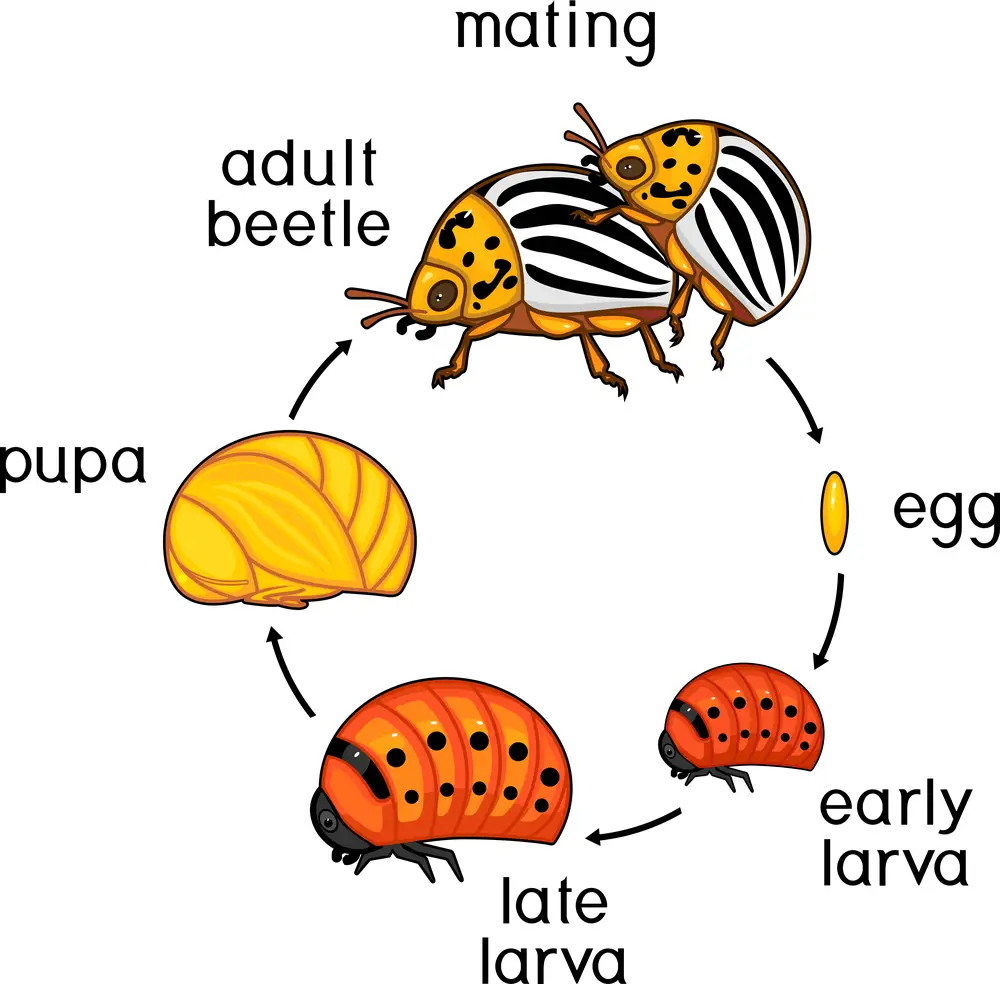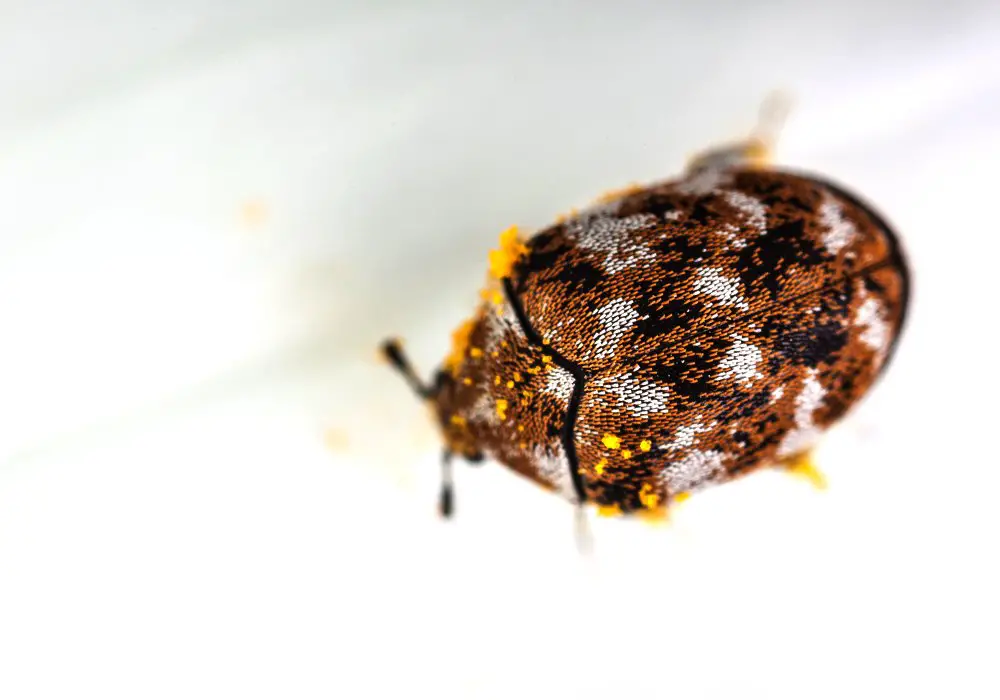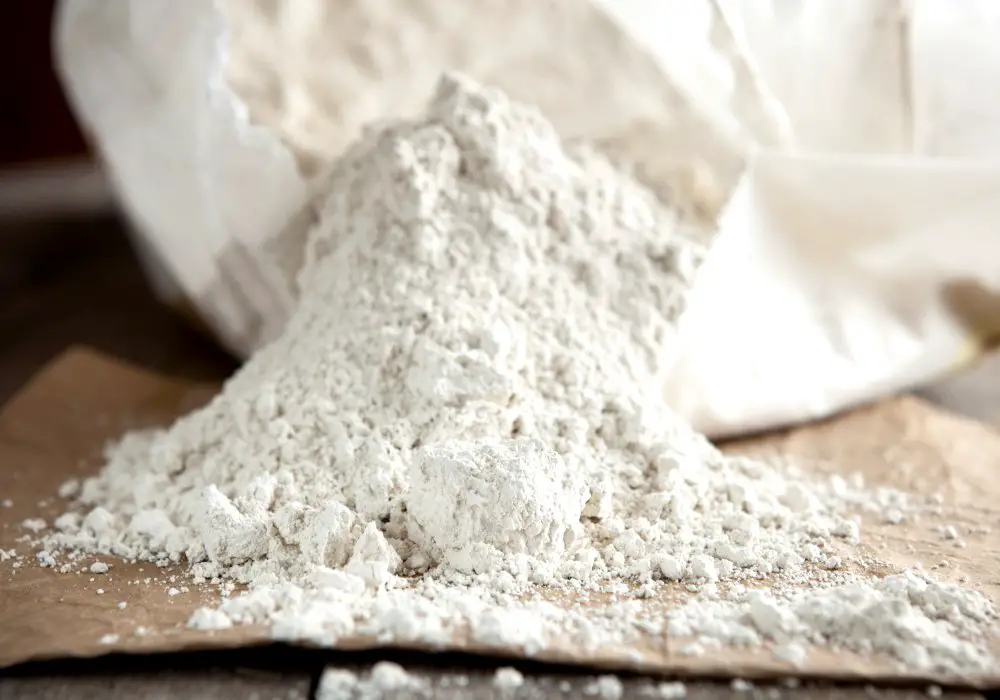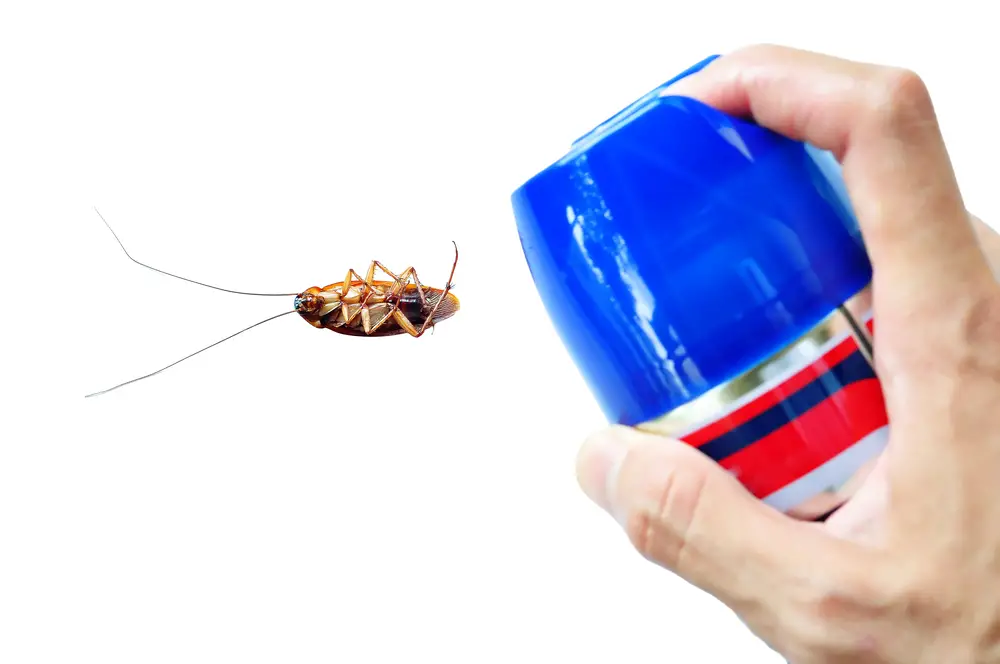Carpet beetles are a common household pest known for causing damage to fabrics, carpets, and stored products. As a result, many homeowners look for effective solutions to get rid of these insects and prevent further harm to their belongings.
Raid is a popular brand of insecticides that offers various products to target different pests. The main question for those dealing with carpet beetles, however, is whether Raid products are successful in eliminating them.
Quick Answer:
Raid, designed to kill a variety of pests, can eliminate carpet beetles. However, as larvae often hide in carpets or upholstery, a single application might not fully remove an infestation. For severe cases, professional pest control is advisable.
Understanding Carpet Beetles

Life Cycle
Carpet beetles are a common household pest, and their life cycle consists of four stages: egg, larva, pupa, and adult. Females lay their eggs in hidden areas, such as carpets, furniture, and clothing.
The eggs usually hatch within two weeks, and the larvae emerge to feed on various materials like fabric, wool, or fur. This stage lasts for several months until they form a cocoon and undergo pupation. Finally, adult beetles emerge and primarily feed on pollen and nectar.
Types of Carpet Beetles
There are three main types of carpet beetles that can infest your home:
- Varied carpet beetle: These beetles are small, oval-shaped, and have a pattern made up of white, brown, and yellow scales on their backs. They are common in the United States and are known to cause significant damage to various materials.
- Furniture carpet beetle: Slightly larger than the varied carpet beetle, these beetles are round and have a pattern of black and white scales on their backs. They are usually found in upholstered furniture, hence the name.
- Black carpet beetle: These beetles are solid black, oval-shaped, and larger than the other two types. They are found worldwide and are known for their more aggressive feeding habits.
Signs of Infestation
Detecting a carpet beetle infestation in the early stages can help prevent extensive damage. Here are some common signs:
- Larvae: Carpet beetle larvae, not adult beetles, are responsible for most of the damage. They are small, hairy, and have distinct, bristle-like hair on their backs. If you notice these larvae in your home, you likely have an infestation.
- Shed skins and fecal pellets: As carpet beetle larvae grow, they will shed their skins. Finding these shed skins and tiny, round fecal pellets are indicators of an active infestation.
- Damage to materials: Check for damage to fabrics, carpets, and upholstered furniture. This will likely be irregular and patchy, as carpet beetle larvae tend to move around while feeding.
- Adult beetles: While not as damaging as the larvae, the presence of adult carpet beetles inside your home is a sign of a possible infestation.
Damage Caused by Carpet Beetles

Fabrics and Textiles
Carpet beetles can cause significant damage to various fabrics and textiles in a home. They tend to feed on natural fibers such as wool, silk, feathers, and fur found in clothing, bedding, and upholstery. The larvae, in particular, will chew through these materials, leaving holes and a fine, lint-like residue.
These insects can also damage synthetic fibers if they contain stains from food or other organic substances.
However, they are less likely to extensively damage completely synthetic materials. To avoid carpet beetle damage, store clothing and textiles in sealed containers and frequently clean susceptible items.
Stored Food and Pantry Items
In addition to damaging fabrics and textiles, carpet beetles can infest and compromise stored food. They are attracted to food sources such as grains, cereal, pet food, and other pantry items.
An infestation of carpet beetles in your pantry can lead to contamination, which might require disposal of affected food items.
To prevent carpet beetles from infesting stored food, keep pantry items in airtight containers and frequently check for signs of their presence. Regular cleaning and inspection of your pantry will also help control infestations.
Plants and Flowers
Although carpet beetles primarily cause damage indoors, they can also affect plants and flowers. The adult beetles are known to feed on the pollen and nectar of certain plants, while the larvae may occasionally feed on the roots, tubers, or fruits. This can result in damaged or discolored foliage, as well as reduced crop yields.
To protect your plants and flowers from carpet beetles, regularly inspect them for signs of infestation and consider applying appropriate insecticides if necessary. Maintaining proper garden hygiene and removing dead or decaying plant material can further discourage the presence of carpet beetles.
Preventing Carpet Beetle Infestation
Home Maintenance
Regular home maintenance can help prevent carpet beetle infestations. Ensure that all doors and windows have tight-fitting screens to keep these pests from entering your home.
Seal any cracks and crevices, particularly in areas where you’ve seen carpet beetles or signs of their activity. Frequent inspection of your home’s exterior will allow you to identify and address any potential entry points.
Effective Cleaning Techniques
To minimize the risk of carpet beetles, maintain a clean and dust-free environment. Regular vacuuming is crucial in preventing the build-up of organic materials that may attract these pests.
Focus on high-traffic areas and pay particular attention to corners, baseboards, and any upholstered surfaces. Vacuum your kitchen and closet floors frequently, as food particles can also attract these insects.
After vacuuming, empty the vacuum cleaner outdoors to prevent re-infestation. Regularly launder your bedding, curtains, and other fabrics that may be attractive to carpet beetles. Wash them in hot water, which can help kill any existing beetles or their larvae.
Pantry Protection Techniques
Carpet beetles can infest your pantry, so protect it with proper food storage. Store grains, cereals, and pet food in airtight containers to keep carpet beetles away and prevent the spread of infestation.
Clean your pantry shelves regularly and look for signs of beetles, such as damaged containers or small holes in packaging. Promptly discard any infested products and thoroughly clean the area to remove any remaining beetles or their larvae.
Using Raid for Carpet Beetles
Types of Raid Products
Raid offers a variety of insecticide products that can potentially help with carpet beetle infestations. Some key products include Raid Ant & Roach Killer and Raid Flying Insect Killer.
These sprays contain active ingredients such as pyrethrin, permethrin, bifenthrin, cyfluthrin, and deltamethrin, which are all part of the pyrethroid family of pesticides. Additionally, some Raid products contain piperonyl butoxide, which enhances the effectiveness of the pyrethroids.
How Raid Works
Raid products work by targeting the nervous systems of insects, including carpet beetles. The active ingredients in Raid, particularly the pyrethroids, disrupt the normal functioning of an insect’s nerve cells, causing paralysis and eventually death.
- Permethrin: A synthetic version of pyrethrin, this insecticide has a longer-lasting effect and is less likely to break down in sunlight.
- Bifenthrin, Cyfluthrin, and Deltamethrin: These three chemicals are also synthetic pyrethroids, providing residual toxicity to help control pest populations over an extended period.
It is essential to apply the Raid spray directly on the affected area, ensuring that you cover all potential hiding spots for carpet beetles.
Safety Precautions
While using Raid to combat carpet beetles, it’s crucial to follow safety precautions to protect yourself and others in the environment:
- Gloves: Wear gloves when handling Raid products to avoid potential skin irritation or chemical burns.
- Mouth covers: Use a mouth cover or face mask to avoid inhaling the chemical fumes during the application.
- Ventilate: Ensure that the treated area is well-ventilated after spraying to allow the fumes to dissipate properly.
Always read and follow the instructions listed on the Raid product label to ensure safe and effective use.
It is also a good idea to test Raid on a small, inconspicuous area before treating the entire carpet to avoid discoloration or damage to the material.
Alternative Carpet Beetle Treatments

Natural Remedies
There are several natural remedies you can use to combat carpet beetles. Boric acid is a popular option that can be sprinkled on carpets and upholstery.
Diatomaceous earth is another naturally occurring substance that can be used to kill carpet beetles by destroying their exoskeletons. You can also use vinegar to spray infested areas or add it to your laundry to help kill off carpet beetles.
Steam cleaning is another effective, chemical-free method that kills carpet beetles and their larvae using high temperatures.
Chemical Pesticides
If natural remedies are not working, you may consider using chemical pesticides to eliminate carpet beetles. Cypermethrin and Imiprothrin are common active ingredients found in many insecticides that target carpet beetles.
These pesticides should be used carefully and according to the product label instructions. It’s important not to overapply and only use these products in the areas where carpet beetles are present.
Professional Pest Control
If DIY methods are not successful, you may need to call a professional pest control company to help eliminate carpet beetles from your home. Exterminators have access to more potent professional carpet beetle killers and can use their expertise to effectively treat your infestation.
When selecting a pest control company, be sure to choose one that has experience dealing with carpet beetles and is knowledgeable about the most effective treatment options.
Other Considerations
How Carpet Beetles and Fleas Differ
Carpet beetles and fleas are often mistaken for one another, but it’s important to understand their differences. Carpet beetles are typically attracted to light and tend to crawl around, while fleas prefer to jump onto their hosts.
When it comes to treatment, flea spray might not be as effective on carpet beetles since their life cycles and habits are different. Both pests pose issues, but proper identification is necessary to deal with them effectively.
Addressing Ant and Silverfish Infestation
In addition to carpet beetles, other pests like ants and silverfish might warrant consideration when creating a treatment plan. Pyrethrins, a common insecticide, can target all of these pests.
However, it is essential to keep the treated area well-ventilated and ensure that pets and people do not come into contact with the chemicals.
When dealing with these pests, another aspect to focus on is their reproduction. While a shake and fog method can help kill adult insects, it may not effectively deal with their eggs.
For instance, carpet beetle eggs can survive in hidden corners and, if not eliminated, can cause a recurring infestation.
- Carpet beetles: Keep an eye out for the carpet beetle eggs, as they can cause a resurgence if not handled.
- Fleas: Regular vacuuming in conjunction with insecticides can help reduce the flea population.
- Ants: Sealing entry points and keeping the area clean can discourage ants from invading your home.
- Silverfish: Controlling humidity levels and not leaving books or papers lying around can help prevent silverfish infestations.





